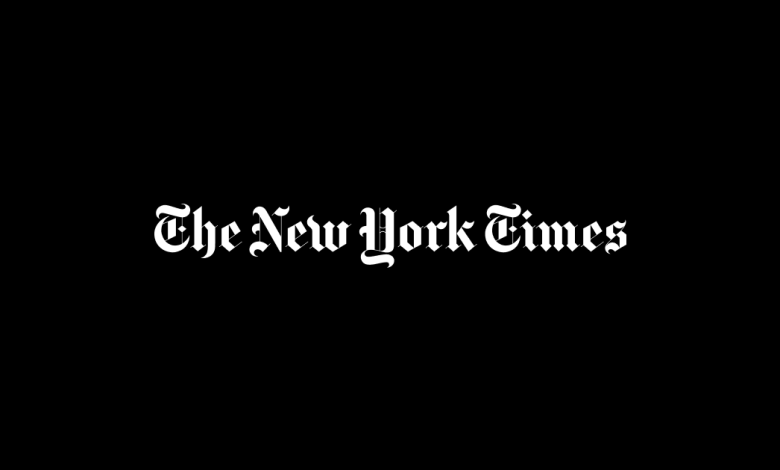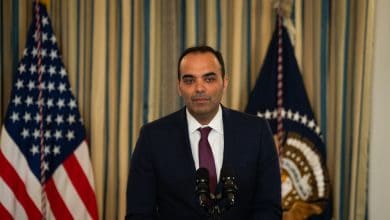The Fed Intensifies Its Battle Against Inflation

Federal Reserve officials, struggling to contain the most rapid inflation in 40 years, delivered a third big rate increase on Wednesday and projected a more aggressive path ahead for monetary policy, one that would lift interest rates higher and keep them elevated longer.
The Fed raised its policy interest rate by three-quarters of a percentage point, boosting it to a range of 3 to 3.25 percent. That’s a significant jump from as recently as March, when the federal funds rate was set at near-zero, and the increases since then have made for the Fed’s fastest policy adjustment since the 1980s.
Even more notably, policymakers predicted on Wednesday that they would raise borrowing costs to 4.4 percent by the end of the year and forecast markedly higher interest rates in the years to come than they had previously expected. Jerome H. Powell, the Fed chair, warned that those moves would be painful for the U.S. economy — but said curbing growth to contain price increases was essential.
“We have got to get inflation behind us,” Mr. Powell said during his post-meeting news conference. “I wish there were a painless way to do that; there isn’t.”
Together, the Fed’s stark projections and the Fed chair’s comments amounted to a declaration: The central bank is determined to crush inflation, even if doing so comes at a cost to the economy in the near term. That message got through to markets, which slumped in reaction to the news, with the S&P 500 index closing down 1.7 percent.
“We want to act aggressively now, and get this job done, and keep at it until its done,” Mr. Powell explained.
His stern remarks reflect a challenging reality for the Fed. Inflation has been stubbornly rapid, and it is proving difficult to wrestle back under control.
Prices continue to increase at more than three times the central bank’s target rate of 2 percent, making everyday life hard to afford as everything from rent to food to household goods continues to grow more expensive. The jump in inflation, which is being felt globally, stems partly from supply chain disruptions caused by the pandemic and war in Ukraine. But the price pressures also come from sustained consumer demand, which has allowed companies to charge more without losing customers.
In fact, people have continued to buy cars, retail goods and dinners out even as the central bank has begun to sharply raise interest rates. Companies have continued to rake in big profits while hiring at a rapid clip, lifting wages as they compete for scarce workers — and sending prices relentlessly higher.
The Fed is trying to change that, a statement the central bank delivered clearly on Wednesday.
“It’s consistent with the message that inflation is public enemy No. 1: They have to keep going,” said Priya Misra, head of global rates research at T.D. Securities.
What the Fed’s Rate Increases Mean for You
A toll on borrowers. The Federal Reserve has been raising the federal funds rate, its key interest rate, as it tries to rein in inflation. By raising the rate, which is what banks charge one another for overnight loans, the Fed sets off a ripple effect. Whether directly or indirectly, a number of borrowing costs for consumers go up.
Consumer loans. Changes in credit card rates will closely track the Fed’s moves, so consumers can expect to pay more on any revolving debt. Car loan rates are expected to rise, too. Private student loan borrowers should also expect to pay more.
Mortgages. Mortgage rates don’t move in lock step with the federal funds rate, but track the yield on the 10-year Treasury bond, which is influenced by inflation and how investors expect the Fed to react to rising prices. Rates on 30-year fixed-rate mortgages have climbed above 6 percent for the first time since 2008, according to Freddie Mac.
Banks. An increase in the Fed benchmark rate often means banks will pay more interest on deposits. Larger banks are less likely to pay consumers more, and online banks have already started raising some of their rates.
The Fed’s policies work by constraining demand. Higher interest rates make it more expensive to borrow money to buy a car or house or expand a business, slowing consumer spending and corporate expansions. As the economy cools and hiring and wage growth slacken, companies will find it a struggle to charge their customers as much, paving the way for more muted price increases.
That is why the path toward weaker inflation is likely to be painful. Officials projected that joblessness will rise to 4.4 percent next year — higher than 3.7 percent now — and stay there through 2024 as economic growth sags considerably below its potential.
“That is something that we think we need to have,” Mr. Powell said. “We think we need to have softer labor market conditions, as well.”
Fed officials believe that the cost is worth it. Leaving inflation unchecked could allow it to become a more permanent feature of the economy. If workers begin to expect prices to increase sharply year after year, they are likely to demand faster pay increases. Businesses would most likely pass that expense along to customers in the form of higher prices, spurring an unhealthy upward spiral.
If inflation became a given in everyday economic life, it might prove harder to stamp out. The Fed allowed uncomfortably quick inflation to continue throughout the 1970s, and it only waned after the Fed, under then-Chair Paul Volcker, pushed interest rates to double-digit levels in the 1980s, sending unemployment soaring to 10 percent.
Many economists believe that drastic response was necessary because an inflationary psychology had taken hold. Nobody wants to repeat the experience.
In the 1970s, the Fed’s attempts at rate increases did not go far enough and were “insufficient to bring inflation down,” said William English, a former director of the monetary affairs division at the Fed who is now an economist at Yale University.
“That’s what they want to avoid,” he said. “In the end, higher inflation isn’t acceptable — you are going to have to bring it down.”
But to lower growth enough to tame price increases, officials think that rates will need to climb notably. Their 2022 forecasts imply that rates could rise by three-quarters of a point at the next meeting, then half a point at the Fed’s December gathering. That is higher than many on Wall Street had been expecting before the meeting, and far more action than what markets had bet on as recently as a few weeks ago.
And policymakers plan to keep going. Central bankers now expect to lift borrowing costs to 4.6 percent by the end of 2023, their fresh projections showed, up from an estimate of 3.8 percent in June. Fed officials do expect to begin lowering rates in 2024, but they anticipate bringing them down slowly.
Given that central bankers are gearing up to push rates to levels not seen since before the 2008 financial crisis, Ms. Misra said she was surprised to see that they did not project an even higher unemployment rate.
Joblessness that climbs to 4.4 percent, as central bankers projected, would undeniably be painful. Omair Sharif, founder of Inflation Insights, calculated that it would amount to about 1.2 million more unemployed people. But it would be relatively mild given the scope of the tightening the central bank is projecting. In the 2008 recession, unemployment rose to 10 percent.
Mr. Powell acknowledged as much, saying that officials are hoping nascent supply chain improvements and the large number of unfilled job openings will give the economy a buffer, allowing inflation to cool without kicking a lot of people out of work.
Markets seemed to briefly take those unemployment projections as a sign that the Fed might not act drastically and would avoid tanking the economy and asset prices. Stock prices jumped for a time as Mr. Powell spoke. But they ultimately declined again as investors digested his broader message: While the Fed might be hopeful in its projections, it is committed to wrestling inflation lower even if its hopes fail to pan out.
“It would be nice if there was a way to just wish it away, but there isn’t,” Mr. Powell said of inflation. “We have to get supply and demand back into alignment, and the way we do that is by slowing the economy.”
That somber tone was a subtle but important shift for Mr. Powell. The Fed chair has a history of emphasizing the bright side of the economic story — last year he often stressed reasons that inflation might prove short-lived, and earlier this year he laid out reasons that the Fed might be able to achieve a soft landing in which inflation comes down without a recession.
But on Wednesday, he explained that while there are reasons to hope that the job market fallout from higher rates may not be extremely painful, “in any case, our job is to deliver price stability.”
When asked about housing, he explained that a painful correction may be needed to restore balance to the market. And when questioned about shelter inflation, which has been pushing overall price increases higher, he emphasized that it may remain high for a while.
“Hope for the best,” Mr. Powell said. “Plan for the worst.”




